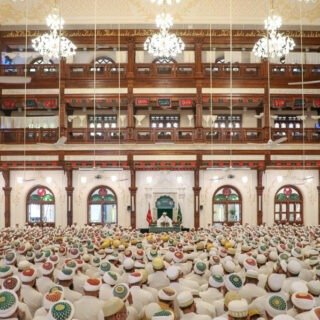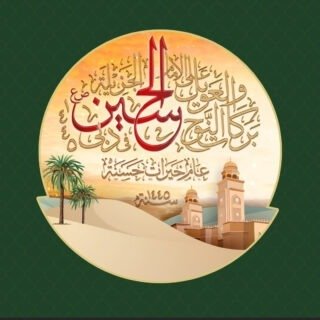As Sherullah al-Moazzam enters its second half we come under the benevolence and succour of the layaali faazila; 17th, 19th, 21st and of course, Laylat al-Qadr on the eve of the 23rd.
These nights are of great significance with manifold divine reward for the those offer ´ibaadat during them. This significance and divine reward peak with the Quran’s promise of a night greater than a thousand months – one night alone that is superior to a lifetime spent in worship.
For us the idea of spending an entire night or even a part of a night in ´ibaadat is not an innate one. Yet, as we come upon these nights it is worth reflecting that were it not for the Duat Mutlaqeen then it would have been extremely unlikely that we would have even an inkling of how to go about worshipping in them.
It was the 2nd Dai Mutlaq, al-Dai al-Ajal Syedna Ibrahim RA, whose qabr mubarak is in Ghayl Bani Hamid, Yemen, who initiated the washeq namaaz, a manifest aspect of these layaali fazila. Washeq can be defined as ‘something in addition’ and as we know it is a namaaz in addition to the night’s usual namaaz. Unlike other types of namaaz that are practised this namaaz remains within the sunnat and tatawwa´ category which are prayed individually and not behind an imam.
It is a remarkable form of namaaz, and its length and manner ensure that one has carried out at least some further ´ibaadat during these nights. The number of rakaat stipulated refer to levels of the celestial and earthly huduud (ranks). In praying this namaaz one fulfils the basic requirement of extended worship and it becomes an offering through which we can then seek forgiveness for our sins and beseech the Almightly for the fulfilment of all our spiritual and temporal needs. Maulana Ali AS stated, “Seek the fulfilment of your needs on the eves of the 17th of Shehre Ramadan and on the eves of the 19th, the 21st and the 23rd”.
The 17th of Shehre Ramadan is also historically important as it was on this day that the Battle of Badr, the first victory of the Muslims over the tribes of Makkah, was fought. The 19th is the eve of the morning in which Maulana Ali AS was martyred in the mihrab of the masjid in Kufa. Lastly, the 21st is known as the ‘lesser Laylat al- Qadr’.
Laylat al-Qadr is sometimes literally translated as the Night of Power, although this translation would seem to distract from the true significance of the night. Opinions differ widely as to the actual night of Laylat al-Qadr for which Rasulallah SA gave a cryptic reply saying, “Look for me when the tip of my nose is in mud” indicating that Layalat al-Qadr that year would be a night of rain when the masjid floor would be as he described. In this way, then, the night is much like Maulatona Fatema AS who willed Maulana Ali AS to bury her at night so that those who had caused her pain would be denied of participating in her burial. He then made many burial mounds so that her actual grave could not be identified by them later.
Although all these nights are sacred, attendance during Laylat al-Qadr is an absolute minimum requirement along with the day of Aashura for to consider himself a mumin, and thereby calling in to question his salvation and life in the Hereafter.
As these days and nights of Sherullah fly by, may we be able to derive the maximum benefit from them through recitation of the Holy Quran, ´ibaadat and acts of goodness and charity. May we find the determination to raise ourselves beyond our normal, routine deeds and actions and go beyond the extra that we may have done in Shehre Ramadan during preceding years. May we all pray for our Maula, Syedna Aali Qadr Mufaddal Saifuddin – whose birth took place in the very night of Laylat al-Qadr; to be blessed with a long and healthy life until the Day of Qiyaamat.
Aameen








